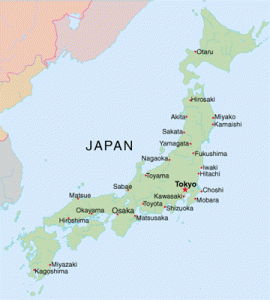Japanese Solutions
The Japanese Condition – Third Largest Economy & Few Natural Resources

Over 125 million people same landmass of California.
Vital to the development of the technologies was a thorough understanding and knowledge of waste materials, their composition, treatment and disposal as well as the problems facing industry. It was from this perspective that our technologies were born and applied commercially. The initial technologies were deployed commercially in 1976 and since then more than 30 years of continuous research and development have produced a series of processing systems and technologies that outperform any other solutions currently available.
If you look at the numbers they speak for themselves and comparatively speaking if you look at the current marketplace and consider the relevant conditions the Japanese difference is obvious. The United Kingdom another island bound nation features similar attributes however with almost half the population of Japan (60 million) it has approximately 20 integrated energy from waste facilities in commercial operation, while North America (Canada, United States & Mexico) with nearly 500 million people has approximately 100. Japan on the other hand has over 1,500 integrated energy-from-waste facilities. Why the difference?
It’s simple, high land values, limited land space (similar land mass as the state of California), over 100 million people living on top of each other (pollution a priority) , high energy costs and few natural resources, industry was forced to innovate in order to compete with the world market. In record time after Worldwar 2, Japan’s status became the 3rd largest economy, even after 2 nuclear attacks in its main industrial manufacturing areas. These unique innovations and approaches have also been applied and implemented to several industrial sectors that use larges amounts of energy including: steel manufacturing, pulp & papage, cooper production, ore processing & smelting, automotive manufacturing, and oil refining to name but a few.
Super Clean Web 2.0 WordPress Business Template - Debonair WordPress Theme created by Artivity exclusively for ThemeForest.
